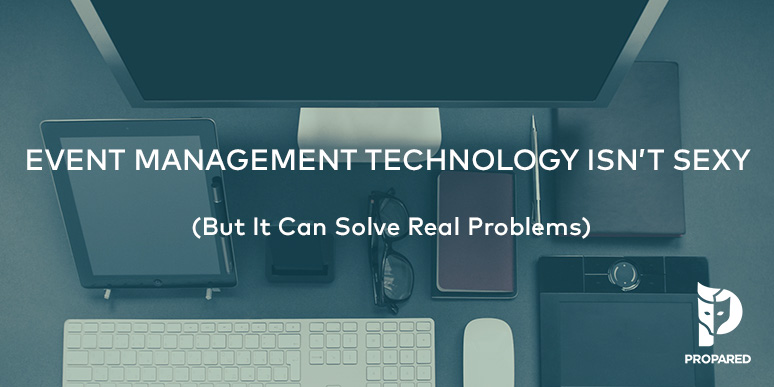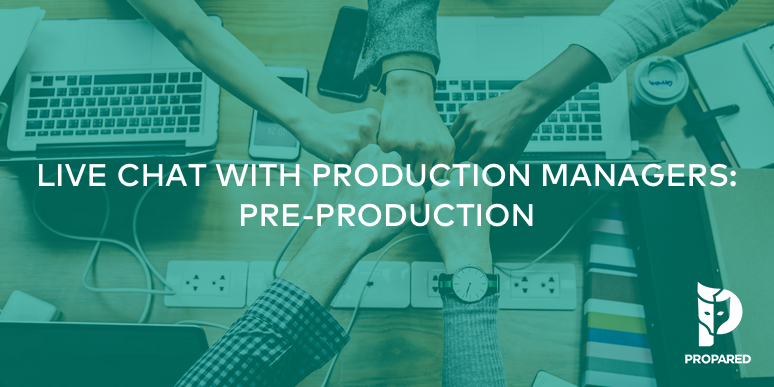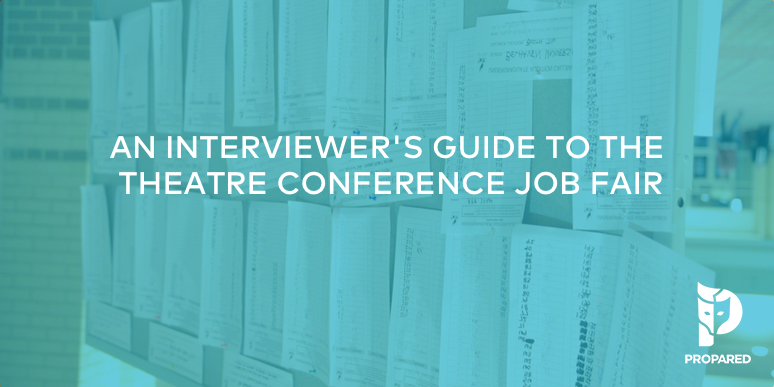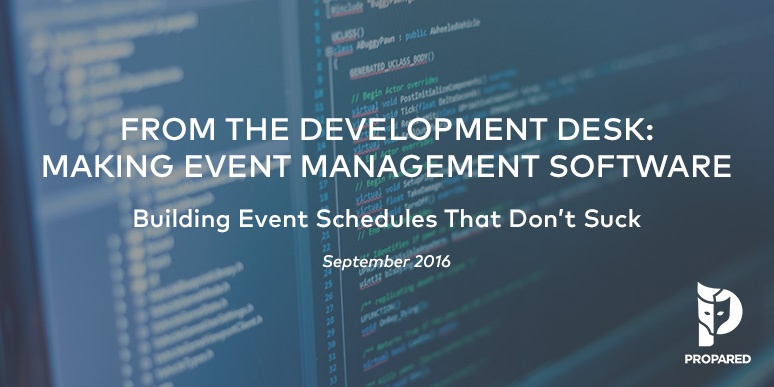
Imagine that innovation is a fast moving river. A lot of the time, it can feel like we are just gripping the edges of our rafts, trying not to capsize and get lost. But every so often, we’re able to catch a calm eddy and take a breather. From here, we can take stock of our journey: where we’ve come from, where we are now, and where we are headed. And most importantly for any company, what is the best way to get there?
As an event production manager, this moment came for me at LDI in 2013. I was wandering somewhat aimlessly up and down the aisles. I marveled at the new lighting gear, sound, video, and special effects. As I was ticking through all of the ways I might be able to use these new toys on my future events, I hit my eddy. And suddenly I was staring at the full scope of the industry with new eyes.
Nearly every production department leaps forward year after year. Processes are improved, gear is more flexible. The design elements available to event planners continue to evolve in exciting ways.
But I say nearly because I noticed one department glaringly absent from the innovation party. Management.
Let me be more specific. When I think about “Management,” I don’t just think about attendees and experiential marketing. I don’t focus solely on building a website or selling tickets, though they are important elements, to be sure. I think about:
-
How the hell can I coordinate all of this stuff?
-
How can I schedule an efficient load in?
-
How can I do a design meeting, a site survey, and an internal team meeting that are across town from each other in the same day?
-
How can I make sure my vendors arrive on time?
-
How can I make sure the correct equipment is ordered?
-
How can I build an event, stay on budget, keep everyone safe, AND make sure my attendees have the most awesome experience?
That’s my view of management. So what about it? Why haven’t management tools to help solve these challenges also gotten better? Why is it that in the time lighting has evolved from PAR Cans to B-Eyes, a lot of managers are still manually building spreadsheets? Are we supposed to get excited about some new Excel formulas to add to an infinite scroll of tiny rectangles?
Or is there just nothing left to advance? That can’t be it. I don’t know of a single event manager who would agree with that statement. So let’s examine a few reasons why the Management Department has been left upstream and explore some ways we can harness the power of existing technology to tackle our own challenges.
Identifying the Barriers
There are 4 key elements that seem to deter innovation in event logistics management technology.
1. Our Work Isn’t Tangible
Lighting, Sound, Set, Costume, Video: each of these departments have products that you can see and touch. Most Management products are process-based, built to transmit information from one person to another, or coordinate the logistics of the aforementioned gear. And a printed PDF schedule may meet the definition of “tangible,” but therein lies another problem…
2. Management Isn’t Sexy
I get it. While as a manager, I might think that auto-updating Paperwork and Visual Timelines are pretty awesome, they don’t inspire a lot of “Oohs” and “Aahs.” Now projection mapping on an all-white Tesla Model S? That’s pretty sexy.
Which leads to another key hurdle for management technology.
3. Management Doesn’t Tell an Event’s Story
It’s pretty easy to see the effects lights, sound, video, etc. have on event productions. In fact, we wrote a whole blog on storytelling addressing it. Management technology is completely hidden, merely the tracks that carry goods from point A to point B.
But while a manager’s tools might not cast light or shade on a story, the impact is no less profound. In fact, one could argue that without the manager’s ability to coordinate, schedule, plan, and keep everything and everyone on task, a story couldn’t be told in the first place.
4. We Have Ourselves to Blame
Event, production, and stage managers are some of the smartest people I know. And they know that the tools they use are inadequate. In fact, they know practically before they even start working. But so many managers have higher priorities (like where the next job is coming from) that it doesn’t seem worth it to spend time and energy demanding, testing, and sourcing a better solution. Better to just use what’s already there and mash it into a passable resource.
We’re only delaying the inevitable. If the foundation of our house is built incorrectly, no amount of upgrades to the kitchen will fix it. That’s what we’ve been doing in event management for the last 30 years; trying to improve upon tools that weren’t built for our needs. It’s time to fix the foundation.
Identifying the Needs
Now that we’ve established some reasons why our technology is outdated, let’s solve the problem!
1. Questions First, Technology Second
Begin by asking yourself these two questions:
-
How can I as a manager use technology to make my life easier?
-
What are the underlying needs of any live event manager?
You have to ask these questions first. Why? Well, if you stay abreast of event industry news, you’ll know the mantra these days is, “More technology!” But for what purpose? It doesn’t make much sense to use technology for technology’s sake. Technology exists to solve problems. If it isn’t a problem, you don’t need to invest money in a tool to address it.
2. Boost Efficiency
Any operations person will tell you; continually examine your process and look for ways to improve your efficiency.
As event managers, we are responsible for collecting, analyzing, and distributing massive amounts of information to our teams. Many of the tools we use on a daily basis (email, spreadsheets, calendars, file storage) are all wonderfully flexible, but terribly inefficient.
We spend countless hours replicating the same tasks; exporting something to attach to an email, searching through folders to find a file, or updating the same piece of schedule information in multiple places. Flexibility comes at a cost. That cost is our time. Efficiency is at the root of everything we do.
3. Eliminate Redundancy
When you type someone’s name into the To: field of an email, your computer or smartphone automatically begins to search and match your keystrokes with an existing entry in your address book. We’re so used to it that we forget how amazing this innovative technological advancement is. We no longer spend time searching, copying, switching applications, and pasting. All hail the Database!
Databases essentially store information in a centralized location, allowing you to reference the same thing (like an email or phone number) again and again instead of having to always retype it. It does wonders for eliminating redundant, menial tasks that severely cut into our work.
Event planning offers countless opportunities to leverage the power of databases. Think about the number of times you type the name of a project or transfer the same information from one application or schedule to another. Add up those seconds and minutes and apply it to your full slate of projects. Suddenly, it seems like a lot of time wasted, yes?
4. Improve Data Visibility
Having access to better analytics is meaningless unless you are able to take action based on the data. Data is a tool, not the answer. It is a complement to existing systems that can help inform better decision-making.
Let’s stick with the database example. Once all your data is centrally stored, the next step would be to be able to filter it. Slice your aggregated data into multiple views, lists, or buckets based on criteria that you set. This can be even more time-consuming than redundant data entry.
Think about how tedious it is to create a “calendar” view in a spreadsheet or word doc. Imagine how much time you spend formatting your paperwork before you even enter a single piece of event-related information. If we agree that more data is a good thing and the ability to gain deeper insight into that data is necessary to do our jobs, then we need tools to do the heavy lifting for us.
5. Streamline Communication
Now you’ve got shiny new data, it’s beautifully sorted and targeted, ready to be shared with just the right people. Ah, sharing.
After everything you’ve just accomplished, your hard work is still a twinkle in your eye. It has no application until you get it into the hands of your colleagues who need to see it. Once they do see it, now what? What happens when something changes? What if only one thing changed?
A vendor is arriving an hour earlier than expected. Seems like a small thing but it could affect a lot of other departments so everyone needs to know. Suddenly, you’re re-filtering data, revising documents, and sending off another round of emails. And so on and so on.
That’s a lot of work every time you need to adjust something. But there are solutions. Syncing calendars and file sharing, to name a few. It’s possible for you and your team to always be looking at the exact same piece of information. Any updates you make will instantly become available to everyone else. Forget versioning and email chains. If you were using Propared, for example, you could create personal Calendar feeds for every single contact. When you want to update something in the event, you simply change the master timeline and everyone’s personalized schedules update automatically.
Here’s the best part: these tools already exist. I know, for some of you this isn’t breathtakingly new. As I wrote earlier, event managers are some of the smartest people I know. I have no doubt that many of these tools and technologies are familiar to you. But it’s up to all of us to embrace them fully. Not just to improve our workflow today but to learn them, test them, and provide feedback to make them better for tomorrow.
Besides, how excellent would it be to have a raft all our own? A big, strong, decidedly unsexy raft.



